Reviewing Data at Rest tab in Data Security dashboard
The Data at Rest dashboard consolidates all the DLP traffic that was identified from API scanning for the data at rest. This will help admins get a quick overview of possible risky activity occurring in their protected cloud applications.

Filtering
You can further filter the information by selecting the appropriate filter from the Search drop-down list on top of date range.
Follow the below steps to filter the information:
- Click into the Search box and select the Field option you are filtering by.
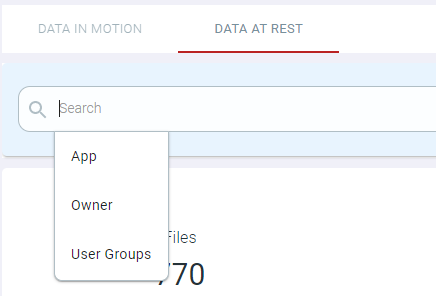
Available options are App, Owner and User Groups.
On selecting the field option, Operator drop-down list appears.
- Select the appropriate operator from the drop-down list.
Available options vary as per the field option selected. Available options are equals, does not equal, Contains and does not contain.

- Enter the text or select the option from the drop-down list to filter the information.
- If you have selected Owner from the Field drop-down list, then you should enter text.
- If you have selected App or User Groups in the Field drop-down list, then select the applicable value.
On entering the text or on selecting the option from the drop-down list, AND function appears.
- Select the AND function to continue your exact match filter.
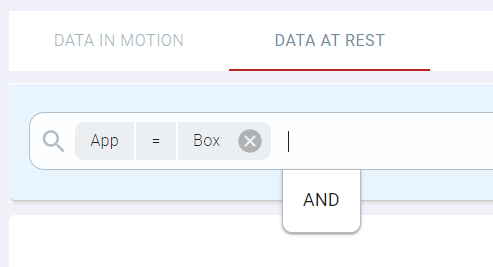
You can then continue to add refined filters as desired. Once ready to search, click into the space and press enter.
Sensitive Data Classification
The Sensitive Data Classification widget displays the number of sensitive files, emails, objects, messages and calendar events detected in the API scan. The Sensitive Data Classification widget also displays total sensitive item detected in the API scan.

You can drill-down the details by clicking a particular number under the type of object. The Sensitive Data Classification : <selected object> page opens displaying the applications and event count for each app in a horizontal bar chart.
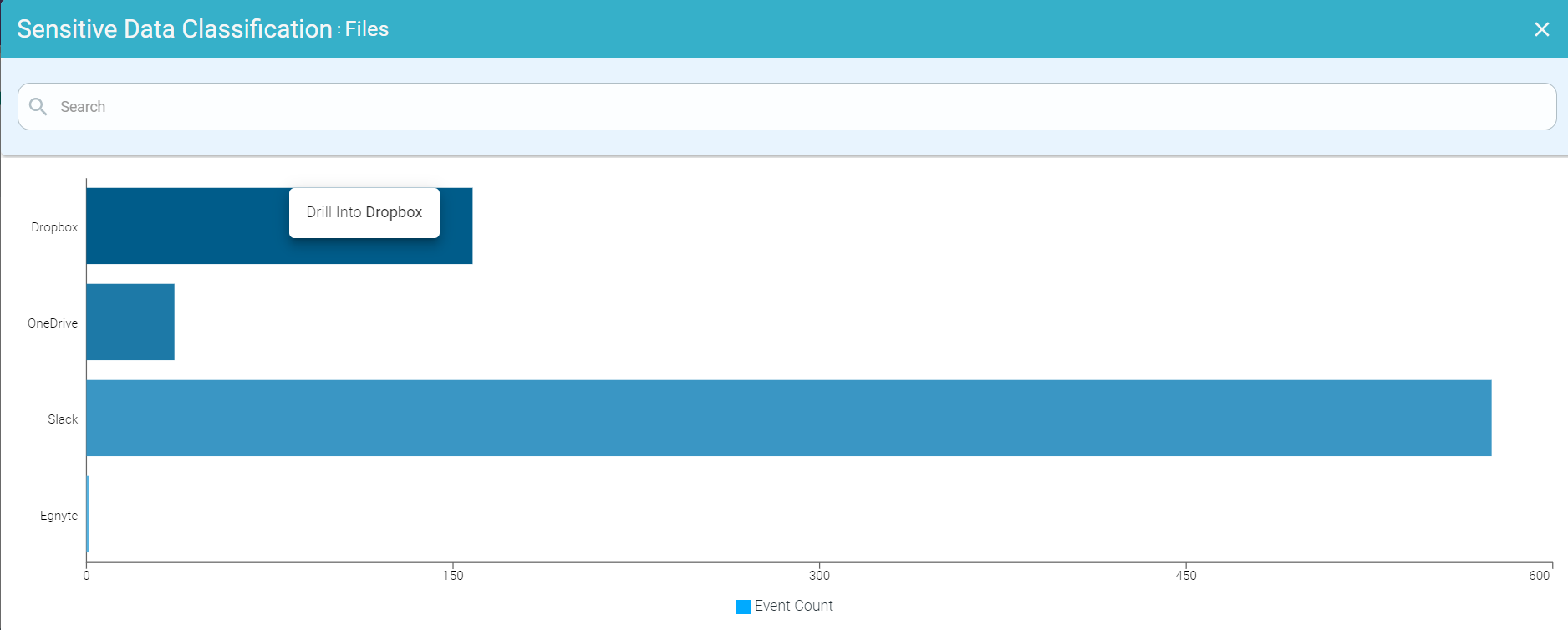
You can further drill-down the details by clicking on the respective horizontal bar of the application and by clicking Drill into all items for <App>. This opens Summary page with filters Type = <type> and Application = <app> and Status = DLP applied.
Sensitive Data Volume Scanned
The Sensitive Data Volume Scanned widget displays the volume of sensitive data scanned and total volume of data scanned through API scan.
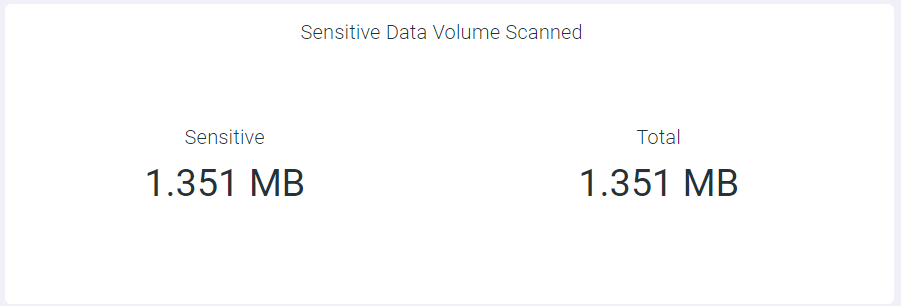
You can click the number below the Sensitive to open the Volume Scanned : Sensitive page. On this page, you can see App Name and Sum Sensitive Scan Bytes fields.

You can click the number below the Total to open the Volume Scanned : Total page. On this page, you can see App Name and Sum Scan Bytes fields.

Actions on Sensitive Data
The Actions on Sensitive Data widget displays how many files were quarantined, copies created, sharing changed and encrypted based on your API policy action.
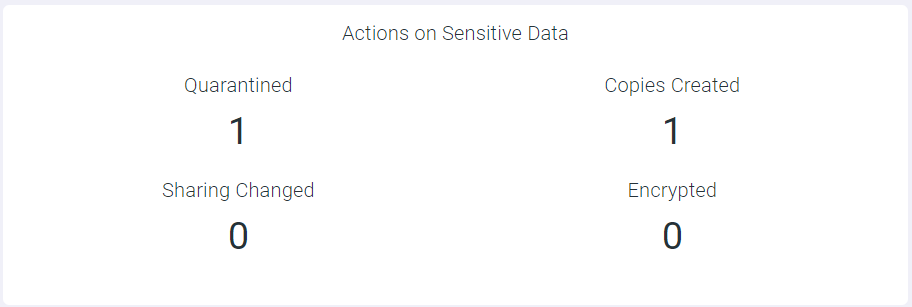
When you click the number below the Quarantined, Volume Scanned : Quarantined page opens. This page contains a modal table with File Name, Owner and App Name fields.
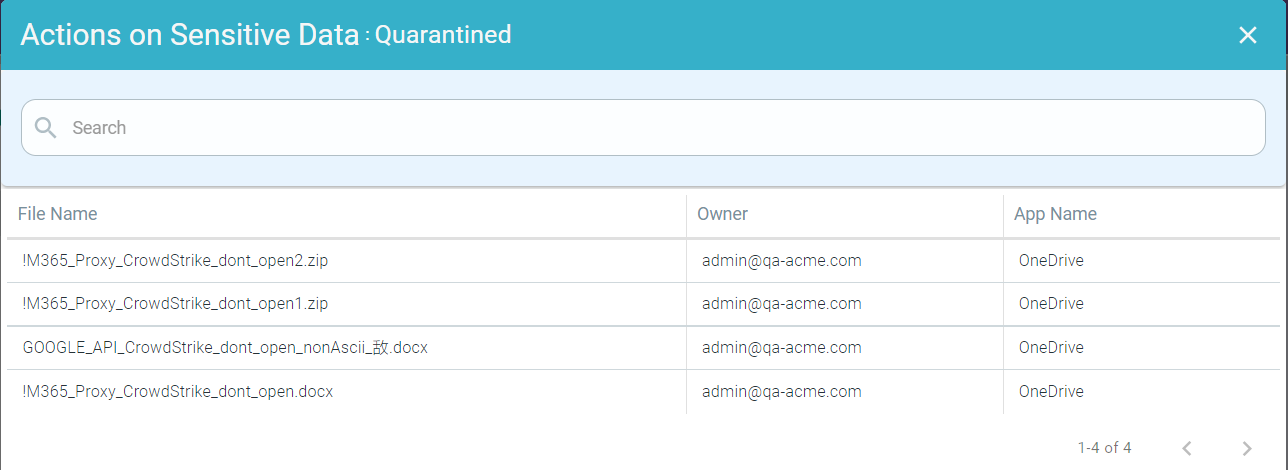
When you click the number below the Copies Created, Volume Scanned : Copies Created page opens. This page contains a modal table with File Name, Owner and App Name fields.
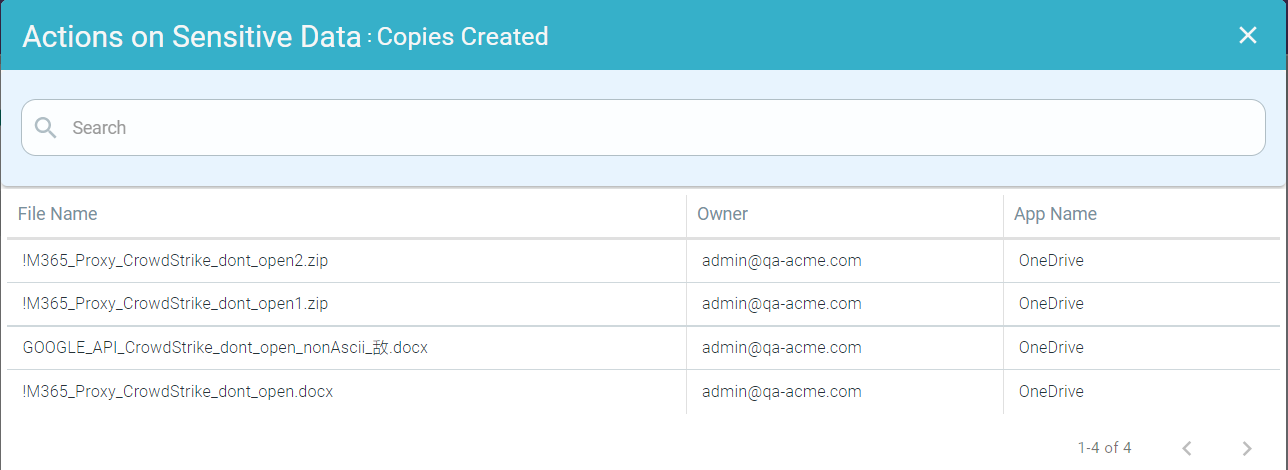
When you click the number below the Sharing Changed, Volume Scanned : Sharing Changed page opens. This page contains a modal table with File Name, Owner and App Name fields.
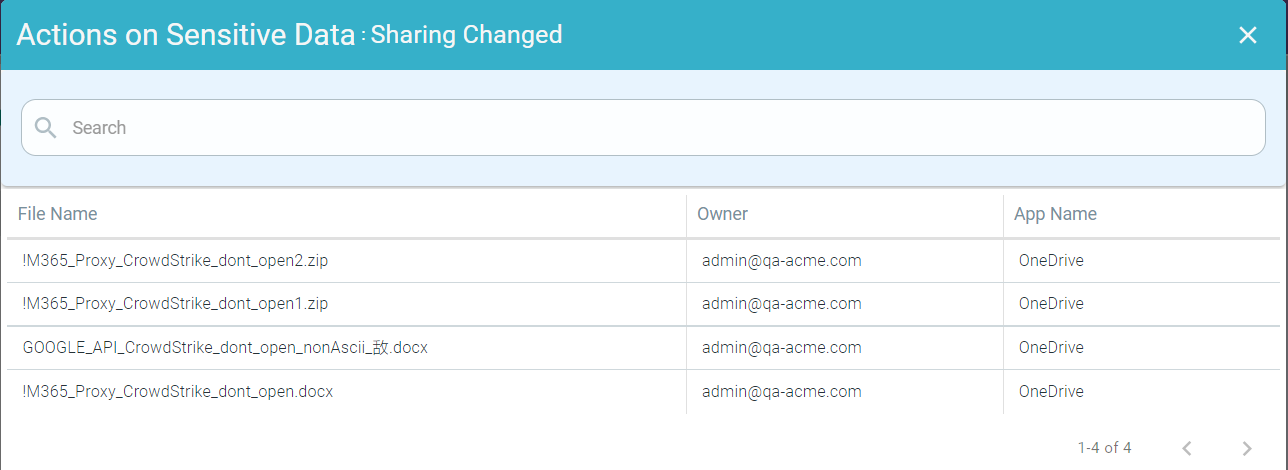
When you click the number below the Encrypted, Volume Scanned : Encrypted page opens. This page contains a modal table with File Name, Owner and App Name fields.
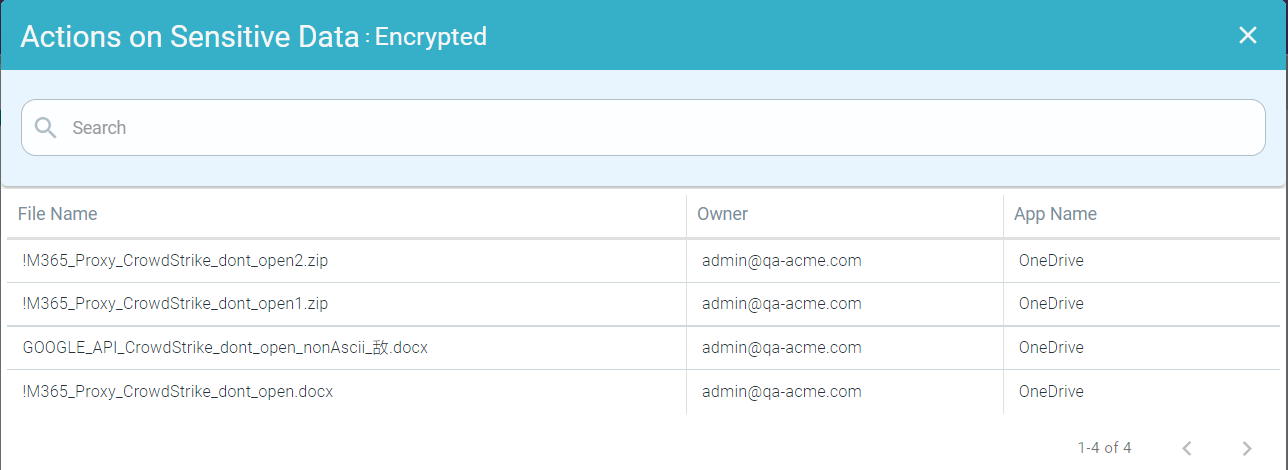
Sensitive Data Spread
The Sensitive Data Spread widget displays top 10 applications where the most sensitive content that was exposed.
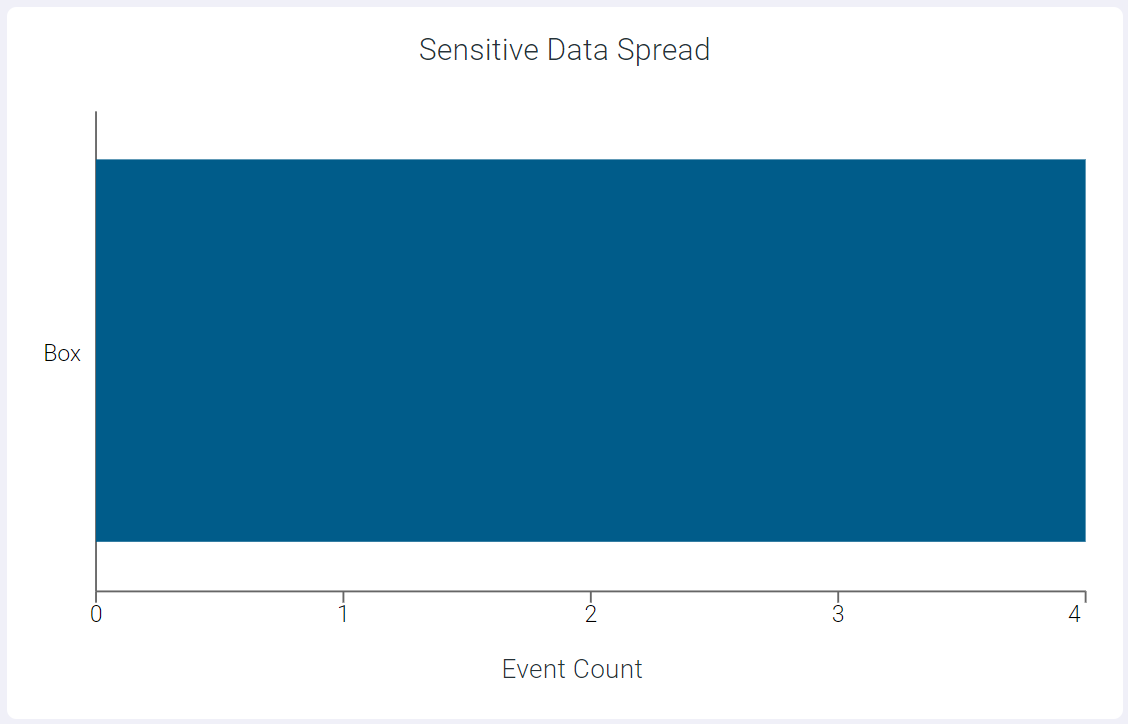
To drill-down the data, click on the particular app (bar) and click Drill into all items for <app> to open Summary logs page with the filters Application = <app> and Status = DLP applied.
Sensitive Data Exposure by App
The Sensitive Data Exposure by App widget displays top 10 applications where the specific data patterns were identified the most as being shared.
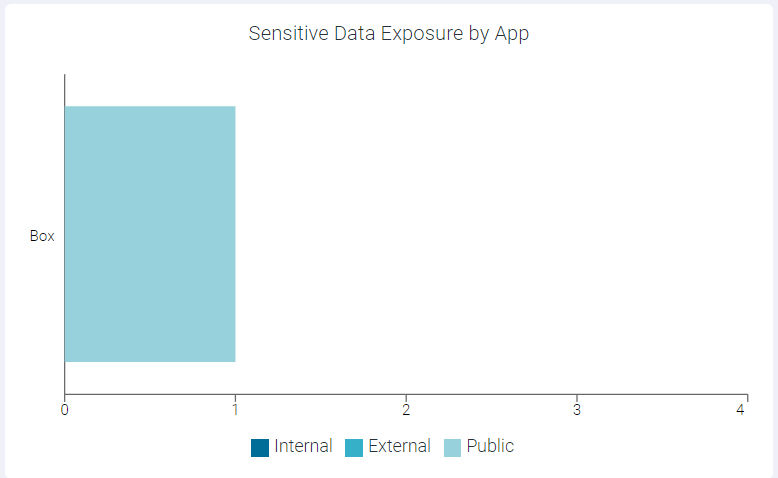
You can view Internal, External or Public data only by clicking the respective ledger at the bottom of the widget. Click the same ledger again to show the Internal, External and Public data on the horizontal bar charts.
Top Groups Owning Sensitive Data
The Top Groups Owning Sensitive Data widget displays top 10 groups who own the sensitive data.
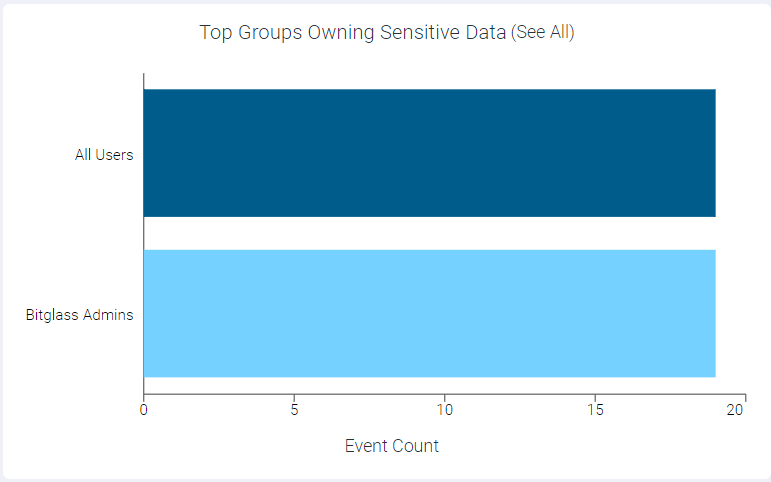
You can click See All next to the Top Groups Owning Sensitive Data to view all the groups owning sensitive data.

Top Owners of Sensitive Data
The Top Owners of Sensitive Data widget displays top 10 users who own the sensitive data.
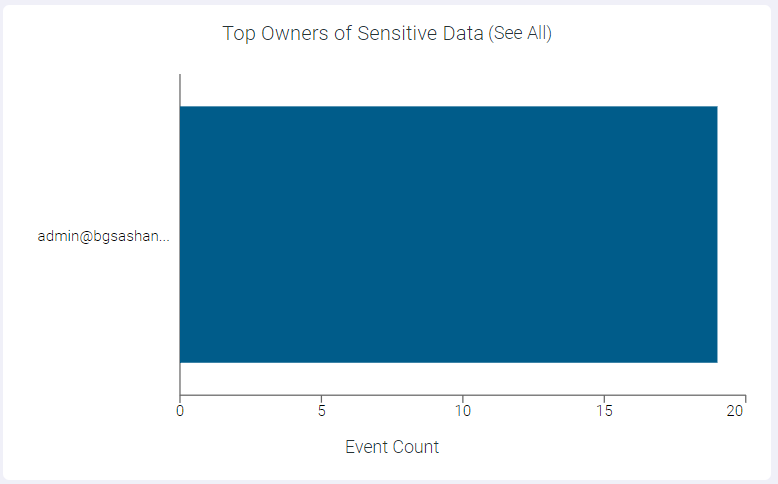
To drill-down the data, click on the particular app (bar) and click Drill into all items owned by <user> to open Summary logs page with the filters Owner = <user> and Status = DLP applied.
You can also click See All next to the Top Owners of Sensitive Data to view all the users owning sensitive data.

Top Publicly Exposed Data Patterns
The Top Publicly Exposed Data Patterns widget displays top 10 data patterns which are publicly exposed.
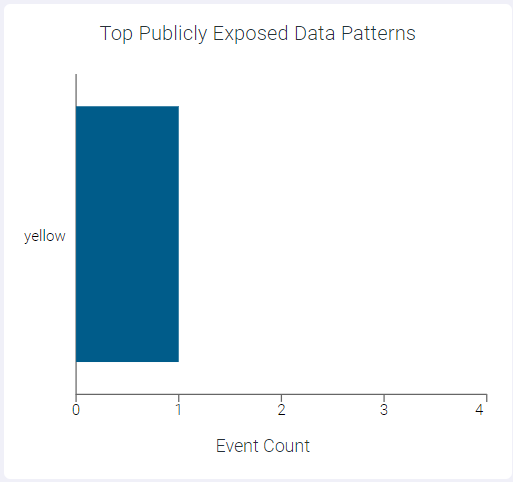
To drill-down the pattern, click on the particular data pattern (bar) and click Drill into all items with <pattern> to open Summary logs page with the filters Data Pattern = <dlp pattern> and Status = Public applied.
Top Externally Exposed Data Patterns
The Top Externally Exposed Data Patterns widget displays top 10 data patterns which are externally exposed.
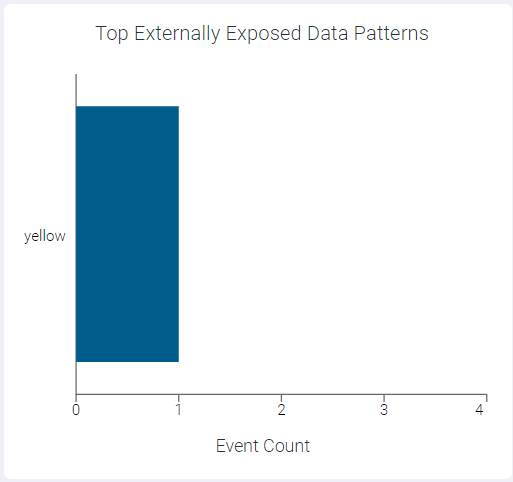
To drill-down the pattern, click on the particular data pattern (bar) and click Drill into all items with <pattern> to open Summary logs page with the filters Data Pattern = <dlp pattern> and Status = External applied.
Top Internally Exposed Data Patterns
The Top Internally Exposed Data Patterns widget displays top 10 data patterns which are internally exposed.
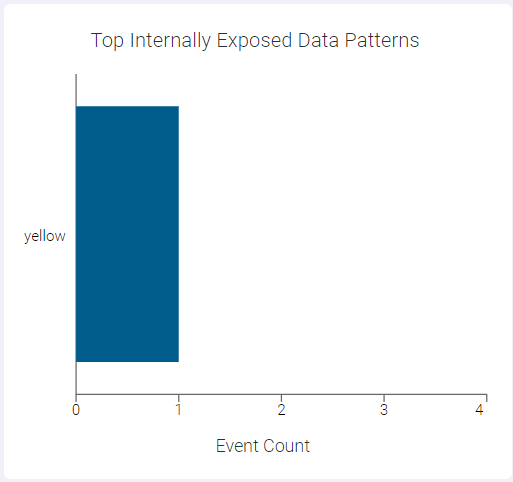
To drill-down the pattern, click on the particular data pattern (bar) and click Drill into all items with <pattern> to open Summary logs page with the filters Data Pattern = <dlp pattern> and Status = Internal applied.